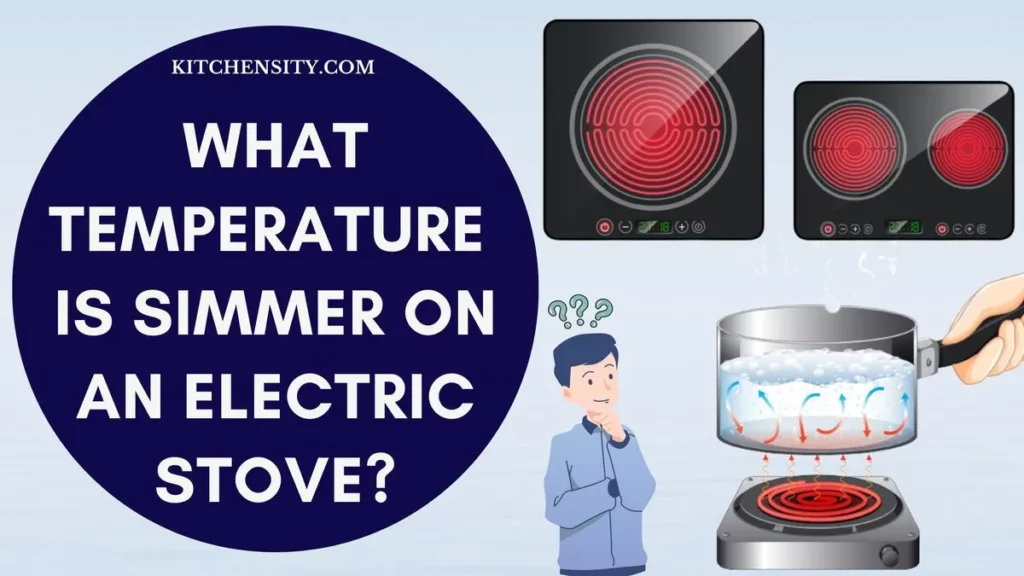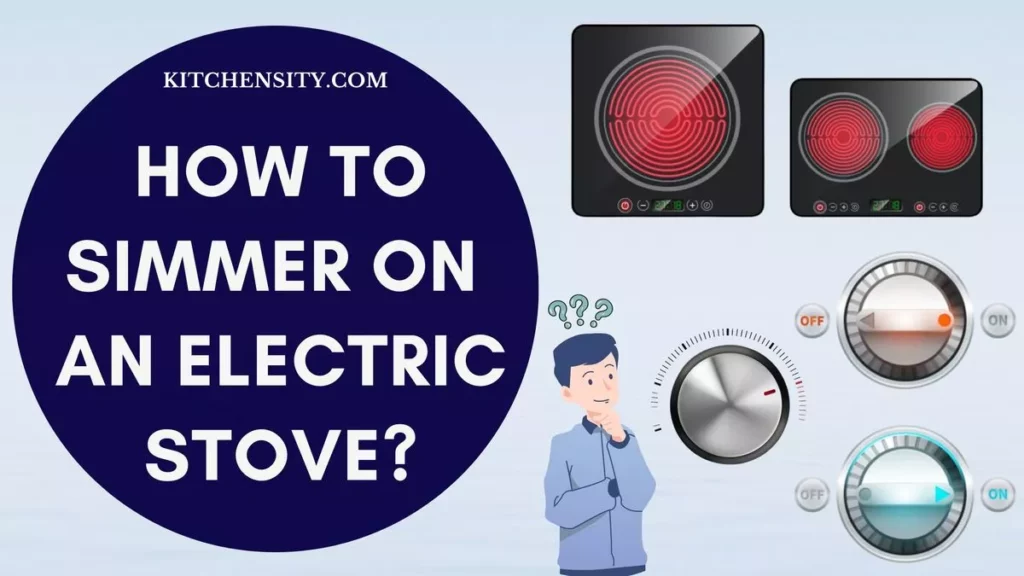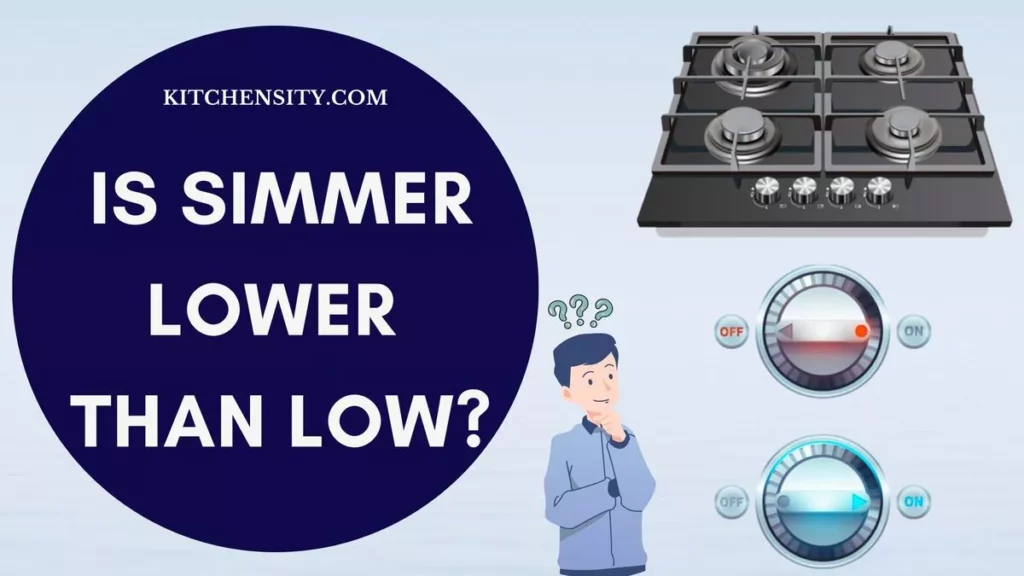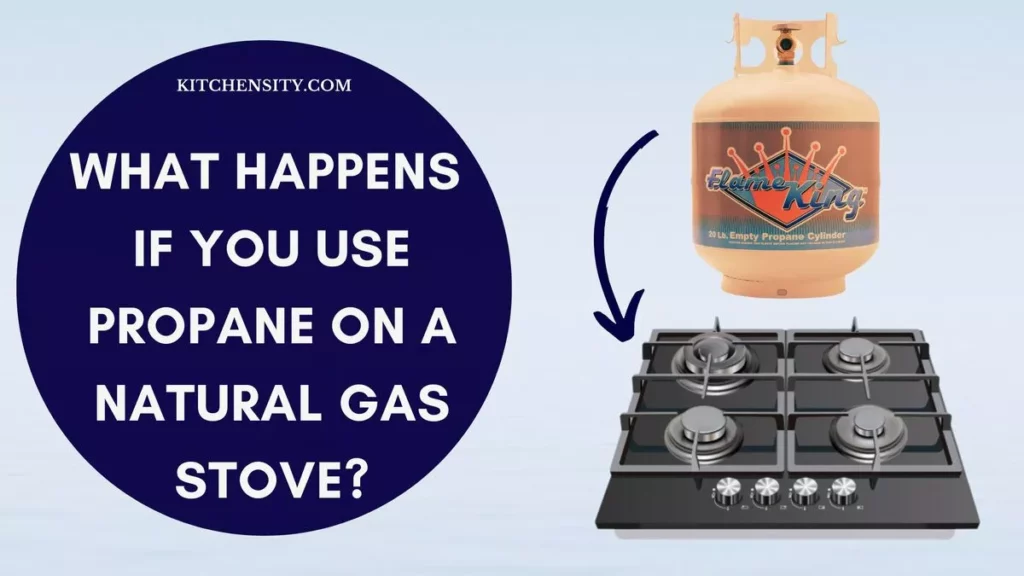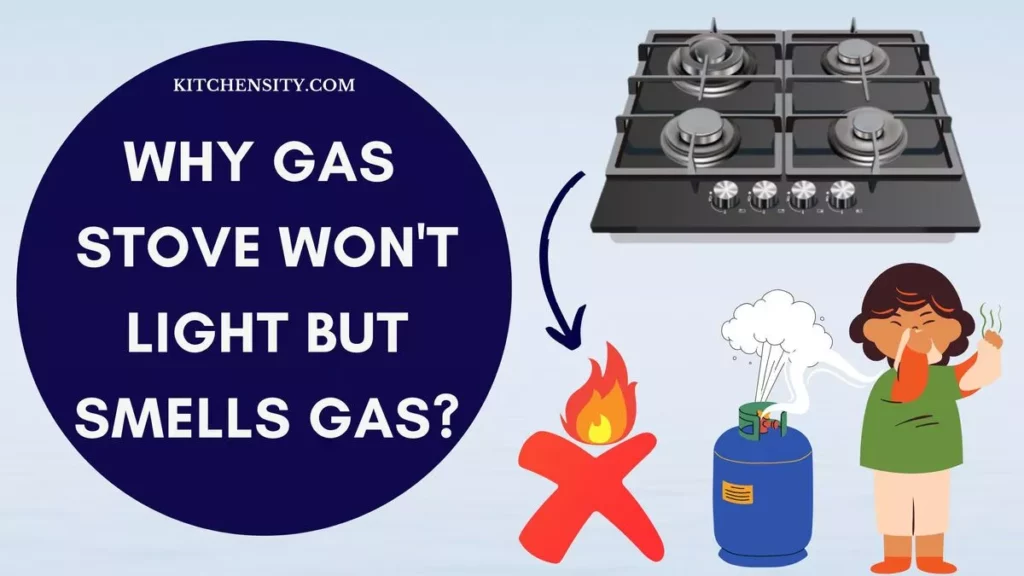In the world of kitchen appliances, electric stoves have become an indispensable part of modern cooking. However, just like other appliances, they are prone to wear and tear.
One of the common issues faced by electric stove owners is malfunctioning burners. When this happens, the question arises: Can you replace burners on an electric stove?
In this comprehensive guide, we will delve into the intricacies of electric stove burners, exploring the possibility of replacement, and providing you with a step-by-step guide.
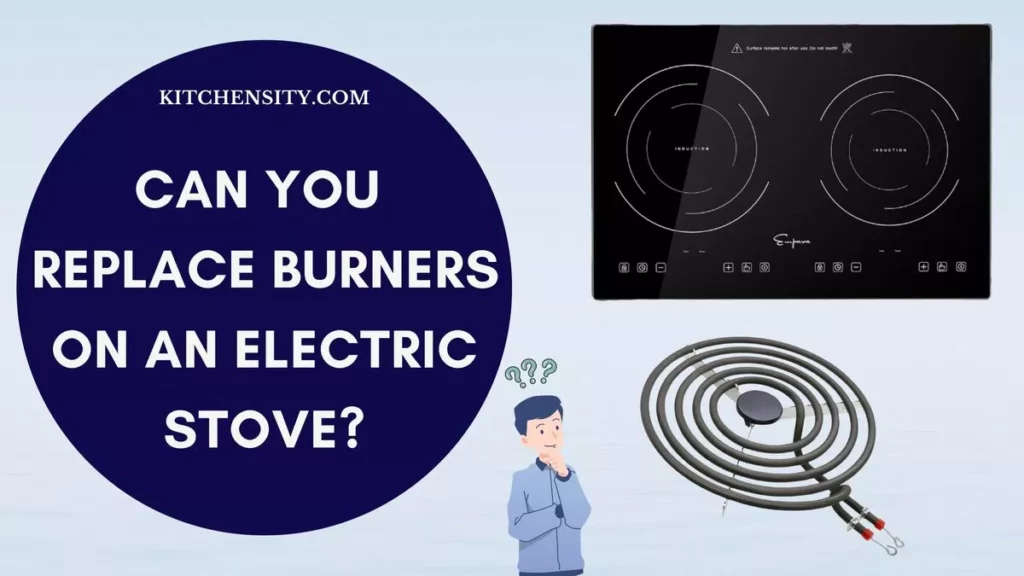
Table of Contents
- 1 Understanding Electric Stove Burners
- 2 Can You Replace Burners On An Electric Stove?
- 3 Can I Replace My Electric Stove Burner With A Different Brand?
- 4 Factors To Consider When Replacing An Electric Stove Burner
- 5 How Do I Replace An Electric Stove Burner?
- 6 How Much Does It Cost To Replace Stove Burners?
- 7 Where Can I Buy Replacement Electric Stove Burners?
- 8 Final Thoughts: Can You Replace Burners On An Electric Stove?
- 9 FAQs (Frequently Asked Questions)
- 9.1 Can I Replace Burners On Any Type Of Electric Stove?
- 9.2 Where Can I Purchase Replacement Burners For My Electric Stove?
- 9.3 Is It Safe To Replace Burners Myself, Or Should I Hire A Professional?
- 9.4 How Often Do Electric Stove Burners Need Replacement?
- 9.5 Can I Use My Stove After Replacing The Burner Immediately?
Understanding Electric Stove Burners
Before we dive into the replacement process, it’s essential to understand the components. Electric stoves typically consist of coiled burners or smooth glass-ceramic burners. Coiled burners are the traditional type, while smooth glass-ceramic burners are the modern, sleek version. Both serve the same purpose but have different structures.
- Coiled Burners: Coiled burners are the classic choice found in older electric stoves. They consist of a metal coil, which heats up when electricity passes through it. Over time, these coils can wear out or become damaged, leading to inefficient heating.
- Smooth Glass-Ceramic Burners: Smooth glass ceramic burners, also known as radiant burners, offer a flat cooking surface. They are visually appealing and easy to clean. However, even these advanced burners can face issues, necessitating replacement.
Also Read – Are Electric Stove Burners Interchangeable?
Can You Replace Burners On An Electric Stove?
Yes, you can replace burners on an electric stove. The process involves turning off the power, removing the damaged burner (coiled or glass-ceramic), and installing a new one. Safety precautions and following the manufacturer’s guidelines are essential.
Replacement burners can be easily found online or in appliance parts stores. However, the process varies depending on the type of burner your stove has. If you’re unsure, consulting a professional technician is recommended.
Also Read – Are Natural Gas And Propane Interchangeable?
Can I Replace My Electric Stove Burner With A Different Brand?
Replacing an electric stove burner with a different brand is generally not recommended due to compatibility issues and potential safety hazards. Electric stoves are designed with specific burner configurations, wattages, and dimensions that match the appliance’s electrical system and overall structure.
Using a burner from a different brand might have varying specifications, such as wattage and size, which can lead to uneven heating or overloading the stove’s circuitry, posing a risk of electrical problems or even fire hazards. Additionally, different brands might have unique designs for their burners, making it challenging to properly fit and secure the burner in place.
Moreover, attempting to use a burner from a different brand could void the warranty of your electric stove. Manufacturers typically advise against using non-original parts to maintain the safety and performance standards of their appliances.
To ensure the safe and efficient operation of your electric stove, it’s best to replace the burner with the same make and model as recommended by the stove’s manufacturer. This ensures compatibility, proper fit, and adherence to safety standards, minimizing the risk of accidents and ensuring the longevity of your appliance.
Also Read – Why Electric Stoves Take Forever To Boil Water?
Factors To Consider When Replacing An Electric Stove Burner
When replacing an electric stove burner, several important factors need to be considered to ensure compatibility, safety, and efficient operation of your appliance:
- Exact Replacement: It’s crucial to find an exact replacement for the burner that matches the make and model of your electric stove. Using the right specifications ensures proper fit and functionality.
- Wattage And Voltage: Check the wattage and voltage ratings of the original burner. The replacement burner should have the same wattage and voltage to prevent electrical issues and ensure consistent heating.
- Size And Shape: Consider the size and shape of the burner. Different stoves have specific burner sizes and shapes. Choosing a burner that fits perfectly on your stove’s surface ensures even heating and prevents instability.
- Type Of Burner: Determine whether your stove uses coiled burners or smooth glass-ceramic burners. Each type has different mounting mechanisms and specifications. Select the appropriate type to match your stove’s design.
- Safety Features: Some electric stoves have safety features built into their burners, such as overheating protection or indicator lights. Ensure that the replacement burner supports these safety features to maintain the stove’s safety functions.
- Quality And Material: Opt for high-quality materials that offer durability and resistance to wear and tear. Quality burners provide efficient heat distribution and have a longer lifespan.
- Ease Of Installation: Choose a replacement burner that is easy to install and compatible with your stove’s mounting system. Some burners come with installation instructions or kits to assist with the process.
- Brand Compatibility: While it’s generally recommended to stick to the same brand for replacement parts if you choose to explore other brands, ensure compatibility by checking customer reviews or consulting with experts.
- Budget: Consider your budget while selecting a replacement burner. While it’s essential to prioritize quality and compatibility, there are various options available to suit different budgets.
- Warranty And Return Policy: Check the warranty and return policy of the replacement burner. Having a warranty ensures that you can get support if the burner has manufacturing defects, providing peace of mind for your purchase.
By carefully considering these factors, you can choose the right replacement electric stove burner that not only fits your budget but also ensures safety, compatibility, and optimal performance for your appliance.
Also Read – How Long Can You Leave An Electric Stove On Without Risking A Fire?
How Do I Replace An Electric Stove Burner?
Replacing an electric stove burner involves a systematic process to ensure safety and proper functionality. Here’s a step-by-step guide on how to replace an electric stove burner:
1. Safety First
- Turn Off The Power: Before starting, make sure to disconnect the power supply to the stove at the circuit breaker to avoid electrical shocks.
- Allow Cooling: If the stove was recently used, allow it to cool down completely to avoid burns.
2. Identify The Burner Type
Identifying the burner type in your electric stove is a crucial step in the replacement process. Electric stoves generally have two types of burners: coiled burners and smooth glass-ceramic burners.

- Coiled Burners:
- Coiled burners are the traditional type, often found in older electric stoves.
- They have visible metal coils that heat up when electricity passes through them.
- These coils are exposed and can be easily seen once the drip pans are removed.
- These can be lifted out after unscrewing any brackets holding them in place.
- Smooth Glass-Ceramic Burners:
- Smooth glass-ceramic burners, also known as radiant burners, are the modern version.
- They feature a flat, glass-ceramic surface with a heating element beneath.
- These burners are visually appealing, easy to clean, and often found in newer electric stoves.
- These are usually held by brackets or clips that need to be removed.
Also Read – How Hot Do Electric Stove Burners Get?
3. Remove The Damaged Burner
Removing the damaged burner from your electric stove is a critical step in the replacement process. The removal method varies based on the type of burner your stove has—coiled burners or smooth glass-ceramic burners. Here’s how to remove the damaged burner for each type:
- For Coiled Burners:
- Safety First: Ensure the stove is turned off and has cooled down to prevent burns or electric shocks.
- Access The Burner: Unscrew any brackets or clips holding the burner in place and lift the electric coil burner slightly to expose the plug-in socket beneath it.
- Disconnect The Burner: Gently pull the burner out of its socket. It might be slightly resistant due to the prongs, so wiggle it if necessary.
- Set Aside Safely: Place the removed burner on a stable surface away from your workspace, ensuring it won’t fall or cause any damage.
- For Smooth Glass-Ceramic Burners:
- Safety Precautions: Turn off the stove and let it cool down completely to avoid burns and injuries.
- Remove Mounting Brackets: Locate the mounting brackets or clips that secure the glass-ceramic burner in place. Typically, these brackets are located on the sides or underneath the burner.
- Unscrew Or Unclip: Using a screwdriver or appropriate tool, unscrew the brackets or unclip them carefully. Keep the screws and brackets aside; you might need them for the new burner.
- Lift Out The Burner: Once the brackets are removed, gently lift the glass-ceramic burner out of its position. Be cautious as these burners are fragile and heavy.
Also Read – How To Simmer On An Electric Stove?
4. Install The New Burner
Installing the new burner in your electric stove is a crucial step in the replacement process. Depending on whether you have coiled burners or smooth glass ceramic burners, the installation method varies. Here’s how to install the new burner for each type:
- For Coiled Burners:
- Safety First: Ensure the power supply to the stove is still turned off to prevent accidents.
- Align The Prongs: Take the new coiled burner and align its prongs with the socket beneath the stove.
- Insert The Burner: Carefully insert the new coiled burner into the socket. Make sure it fits snugly and the prongs are securely connected.
- Secure In Place: If your stove has brackets or clips to secure the burner, use them to hold the new burner in position. Screw them in securely to prevent any wobbling.
- For Smooth Glass-Ceramic Burners:
- Safety Precautions: Double-check that the power supply is still turned off to avoid electrical accidents.
- Place The New Burner: Position the new glass-ceramic burner in the designated area on the stove. Ensure it fits properly and aligns with the screw holes.
- Attach Mounting Brackets: Use the screws and mounting brackets you removed earlier to secure the new burner. Carefully screw them in place, ensuring the burner is stable.
- Tighten Securely: Tighten the screws securely, but avoid over-tightening, as it could damage the glass-ceramic surface.
- Double-Check Stability: Once the burner is installed, gently wiggle it to confirm it’s stable and properly secured.
If you encounter any difficulties during the installation process or are unsure about any step, consult your stove’s manual or consider seeking assistance from a professional technician. Safety is paramount when dealing with electrical appliances.
Also Read – What Temperature Is Simmer On An Electric Stove?
5. Test The Burner
Testing the newly installed burner on your electric stove is a crucial step to ensure it functions correctly and safely. Here’s how to test the burner after installation:
- Safety Precautions:
- Turn On The Power: Switch on the power supply at the circuit breaker to provide electricity to the stove.
- Keep Clear: Ensure there are no flammable materials, utensils, or other objects near the burner.
- Switch On The Burner:
- For Coiled Burners: Turn the corresponding burner knob to the desired heat level. The coiled burner should start glowing red, indicating it’s heating up.
- For Smooth Glass-Ceramic Burners: Activate the burner using the control panel or touch-sensitive controls. The surface around the burner should start heating up evenly.
- Observe Even Heating:
- Coiled Burners: Check if the entire coil heats up uniformly without any dark spots. Uneven heating might indicate a problem.
- Smooth Glass-Ceramic Burners: Ensure the glass-ceramic surface around the burner heats up evenly without any visible defects.
- Test Multiple Heat Levels:
- Adjust the burner settings to different heat levels (low, medium, high) to test the responsiveness and consistency of the heat output.
- For coiled burners, observe how quickly they heat up and cool down when adjusting the settings.
- Check For Unusual Sounds Or Smells:
- Listen for any unusual sounds like buzzing or hissing, which might indicate a problem with the burner.
- Smell for any strange odors, which could suggest burning residue on the new burner. If this occurs, turn off the stove immediately and inspect the installation.
- Monitor For A Few Minutes: Keep an eye on the burner for a few minutes to ensure it operates without issues. Watch for any smoke, flickering, or other irregularities.
- Ensure Safety Features Work: If your stove has safety features like indicator lights or overheating protection, confirm that these features are functioning correctly while the burner is in use.
- Switch Off And Cool Down: After testing, turn off the burner and let it cool down before touching it or attempting to clean the surface.
If the burner operates smoothly without any problems during testing, you can consider it successfully installed. However, if you notice any issues, or unusual behavior, or suspect a problem, it’s essential to turn off the stove immediately and seek professional assistance. Safety is paramount when dealing with electrical appliances.
Also Read – Best Cookware For Electric Stoves
6. Final Checks
Performing final checks after installing a new electric stove burner ensures that the replacement process is successful and the appliance is safe and ready to use. Here are the essential final checks to conduct:
- Stability And Secure Installation:
- Ensure the new burner is stable and securely installed. There should be no wobbling or movement when pressure is applied.
- Double-check that all screws, brackets, or clips used to secure the burner are tightened properly.
- Even Heating:
- Turn on the burner and observe whether it heats up evenly across its entire surface.
- Check for any hotspots or uneven heating patterns that might indicate a problem with the installation.
- Compatibility And Fit:
- Confirm that the replacement burner is compatible with your electric stove model.
- Verify that the burner fits perfectly in its designated space and aligns with the surrounding surface without any gaps.
- Safety Features:
- If your stove has safety features such as indicator lights, overheating protection, or child lock, ensure that they are functional.
- Test these safety features to confirm they respond appropriately to different settings and conditions.
- Control Panel And Settings:
- If the burner is controlled through a digital panel or touch-sensitive controls, ensure that all settings are responsive and accurate.
- Test various heat levels to confirm that the controls are functioning correctly.
- Visual Inspection:
- Inspect the burner visually for any signs of damage, such as cracks or discoloration, which might indicate a faulty installation or a defective burner.
- Check the area around the burner for cleanliness and ensure there are no leftover residues from the installation process.
- User Manual Guidelines:
- Refer to your stove’s user manual and cross-verify the installation steps to make sure you haven’t missed any crucial details.
- Follow any specific recommendations or guidelines provided by the manufacturer.
- Operational Noise And Smell:
- Listen for any unusual noises, such as buzzing or hissing, while the burner is operational. Unusual sounds might indicate a problem.
- Smell for any strange odors, which could suggest burning residues. If detected, turn off the stove immediately and inspect the burner.
- Functionality Tests: Perform additional functionality tests, such as boiling water or cooking a simple dish, to ensure the burner operates smoothly under real cooking conditions.
Remember, if you are uncertain about any step or encounter difficulties, it’s always best to consult the stove’s manual or contact a professional technician for assistance. Safety is paramount when dealing with electrical appliances.
Also Read – Does A Gas Stove Need A Dedicated Circuit?
7. Clean The Stove
Cleaning your electric stove after replacing the burner is essential to maintain its functionality and appearance. Here’s how to clean the stove effectively:
- Cool Down Completely: Ensure the stove has cooled down completely before starting the cleaning process. Hot surfaces can cause cleaning agents to evaporate quickly.
- Remove Burner Drip Pans: If your electric stove has drip pans beneath the burners, remove them. Clean these separately with warm, soapy water or replace them if they are too soiled or damaged.
- Wipe The Surface: Use a soft, damp cloth to wipe the entire stove surface. For stubborn stains or dried spills, dampen the cloth with a mixture of warm water and mild dish soap. Avoid abrasive materials that can scratch the surface.
- Clean Burner Elements:
- For coiled burners, lift them gently and wipe away any residue or spills. If needed, use a soft brush or cloth to remove stubborn debris.
- For smooth glass-ceramic burners, use a special glass-ceramic cleaner and a soft cloth to clean the surface. Avoid abrasive sponges or pads that could scratch the glass.
- Clean Control Knobs And Panels: If your stove has control knobs or touch-sensitive panels, clean them with a slightly damp cloth. Avoid letting water seep into the controls to prevent electrical issues.
- Clean Around The Burner Socket: Carefully clean around the burner socket area, ensuring there is no debris or cleaning residue that could affect the new burner’s stability or performance.
- Clean Oven Interior (If Applicable): If your electric stove has an oven, remove racks and wipe down the interior with a mild oven cleaner. Follow the manufacturer’s guidelines for cleaning the oven.
- Replace Drip Pans (If Applicable): If you remove drip pans, ensure they are completely dry before placing them back under the burners.
- Polish And Shine (Optional): For a polished finish, use a clean, dry cloth to buff the stove’s surface gently. This step is optional but can enhance the stove’s appearance.
- Dispose Of Cleaning Materials Properly: Dispose of used cleaning materials safely and responsibly. Follow local guidelines for proper disposal of cleaning agents and materials.
Also Read – Why Is My Gas Stove Not Clicking?
Regular cleaning not only keeps your electric stove looking new but also ensures the longevity of its components. Remember to clean up spills promptly in the future to prevent them from hardening and becoming difficult to remove.
How Much Does It Cost To Replace Stove Burners?
The cost of replacing stove burners can vary widely based on several factors, including the type of stove you have, the type of burners you’re replacing, and whether you’re purchasing original equipment manufacturer (OEM) parts or aftermarket replacements. Here’s a breakdown of the potential costs:
- Type Of Stove: Replacement burners for electric stoves are generally more affordable than those for gas stoves. Electric burners come in coiled or smooth glass-ceramic varieties.
- Type Of Burners:
- Coiled Burners: Coiled burners for electric stoves are often more affordable than smooth glass-ceramic burners. Prices can range from $11 to $60 per burner, depending on the quality and brand.
- Smooth Glass-Ceramic Burners: These tend to be more expensive due to their sleek design and advanced technology. Prices can vary significantly but may range from $50 to $200 or more per burner.
- Oem Vs. Aftermarket Parts:
- OEM Parts: Original equipment manufacturer (OEM) burners are made by the stove’s manufacturer. They are specifically designed for your stove model but can be more expensive, often ranging from $30 to $150 or more per burner.
- Aftermarket Parts: Aftermarket burners are produced by third-party manufacturers. They are usually more affordable than OEM parts, with prices starting from $10 to $80 per burner, depending on the quality and compatibility.
- Professional Installation: If you hire a technician to install the burners, there will be an additional cost for labor, which can vary based on your location and the complexity of the installation. Installation costs can range from $50 to $150 or more.
- Diy Vs. Professional Installation: If you choose to replace the burners yourself, you can save on labor costs. However, if you’re not confident in your DIY skills, hiring a professional ensures proper installation and safety.
- Additional Costs:
- Shipping and Handling: If you’re ordering replacement burners online, consider shipping costs, especially for heavy or fragile items like glass ceramic burners.
- Tax and Fees: Depending on your location and the seller, you might need to account for sales tax and additional fees.
It’s essential to research prices, compare options, and consider your budget and the quality of the replacement burners when making a decision. Additionally, consulting the stove’s manual and, if necessary, seeking professional advice can help you make an informed choice and ensure the safe and proper functioning of your stove after the replacement.
Also Read – How To Fix A Pilot Light On A Gas Stove?
Where Can I Buy Replacement Electric Stove Burners?
You can buy replacement electric stove burners from various sources, both online and offline. Here are some options:
- Home Improvement Stores: Home improvement stores like Home Depot, Lowe’s, and Ace Hardware sell a wide variety of replacement electric stove burners. You can usually find burners for the most popular brands and models of stoves.
- Appliance Stores: Appliance stores like Sears, Best Buy, and Lowe’s also sell replacement electric stove burners. Appliance stores may have a wider selection of burners than home improvement stores, but they may also be more expensive.
- Online Retailers: You can also buy replacement electric stove burners online from retailers like Amazon, eBay, and Walmart. Online retailers often have the best prices on replacement burners, but you need to make sure to order the correct burner for your stove.
- Appliance Repair Shops: Local appliance repair shops may have replacement burners in stock. These shops specialize in appliance repairs and often carry a variety of replacement parts.
- Specialty Appliance Parts Websites: There are websites specifically dedicated to selling appliance parts. These sites offer a wide range of replacement burners for various stove models. Examples include PartSelect and RepairClinic.
- Local Repair Centers: Contact local appliance repair centers and ask if they sell replacement electric stove burners. They might have parts in stock or be able to order them for you.
- Social Media Marketplace: Platforms like Facebook Marketplace often have individuals selling new or gently used replacement parts. Exercise caution and ensure the part is compatible with your stove before making a purchase.
When choosing a replacement electric stove burner, it is important to make sure that it is compatible with your stove. You can find this information in your stove’s owner’s manual or by contacting the manufacturer of your stove. You should also consider the size, wattage, and type of burner that you need.
Also Read – Why Gas Stove Won’t Light But Smells Gas?
Here are some tips for buying replacement electric stove burners:
- Know the make and model of your stove. This will help you to find the correct burner for your stove.
- Measure the size of the burner that you need. Replacement burners are available in a variety of sizes.
- Consider the wattage of the burner that you need. Replacement burners are available in a variety of wattages. The wattage of the burner will determine how hot it can get.
- Choose the type of burner that you need. Replacement burners are available in a variety of types, such as coil, radiant, and halogen.
- Compare prices from different retailers. You can often find the best prices on replacement burners online.
Once you have purchased your replacement electric stove burner, you can install it yourself or hire a professional to install it. If you are installing the burner yourself, be sure to follow the instructions that come with the burner.
Also Read – How To Fix The Gas Stove Igniter Not Sparking After Cleaning?
Final Thoughts: Can You Replace Burners On An Electric Stove?
In conclusion, replacing burners on an electric stove is not only possible but often a practical solution to common issues faced by stove owners. Whether dealing with coiled burners in traditional stoves or sleek glass-ceramic burners in modern appliances, the process involves careful removal, precise installation, and thorough testing.
By following the outlined steps and considering essential factors like compatibility, safety, and quality, individuals can successfully replace electric stove burners, restoring their stoves to optimal functionality. DIY enthusiasts can save costs by undertaking the replacement process themselves, provided they prioritize safety and adhere to manufacturer guidelines.
Moreover, the availability of replacement burners through various channels, including appliance parts stores, online retailers, and manufacturer websites, offers consumers diverse options. Whether opting for OEM or aftermarket parts, buyers can find suitable replacements tailored to their specific stove models.
However, it’s crucial to exercise caution, especially for those unfamiliar with electrical appliances. In cases of uncertainty or if encountering challenges during the replacement process, seeking professional assistance ensures a safe and effective solution.
In essence, the ability to replace burners on an electric stove empowers stove owners to extend the lifespan of their appliances, enhance energy efficiency, and continue enjoying reliable cooking experiences. With the right knowledge, tools, and replacement parts, the answer to the question “Can You Replace Burners on an Electric Stove?” is a resounding yes, providing a cost-effective solution for stove maintenance and ensuring uninterrupted culinary adventures.
Also Read – Why Did My Glass Stove Top Crack?
FAQs (Frequently Asked Questions)
-
Can I Replace Burners On Any Type Of Electric Stove?
Yes, most electric stoves allow users to replace burners, but checking the stove’s manual for specific instructions is essential.
-
Where Can I Purchase Replacement Burners For My Electric Stove?
Replacement burners are readily available online and in-store at appliance parts retailers.
-
Is It Safe To Replace Burners Myself, Or Should I Hire A Professional?
If you have basic DIY skills and follow safety guidelines, replacing burners can be done at home. However, if you’re unsure, it’s best to consult a professional technician.
-
How Often Do Electric Stove Burners Need Replacement?
The lifespan of burners varies, but on average, they might need replacement every 3 to 5 years with regular use.
-
Can I Use My Stove After Replacing The Burner Immediately?
It’s recommended to test the burner thoroughly after replacement. If it functions correctly, you can resume using your stove as usual.
🔧 Stove Expert | 🔥 Gas Guru | 🏠 DIY Enthusiast | 🎨 Painter Extraordinaire
John Davis is your go-to source for all things stoves, from expert repairs to maintenance tips. With a deep understanding of gas systems, including natural and propane, John ensures your kitchen stays cooking safely. His passion for DIY home and kitchen projects shines through his stunning paint transformations. Trust John to bring warmth and functionality to your home, one stove at a time.

